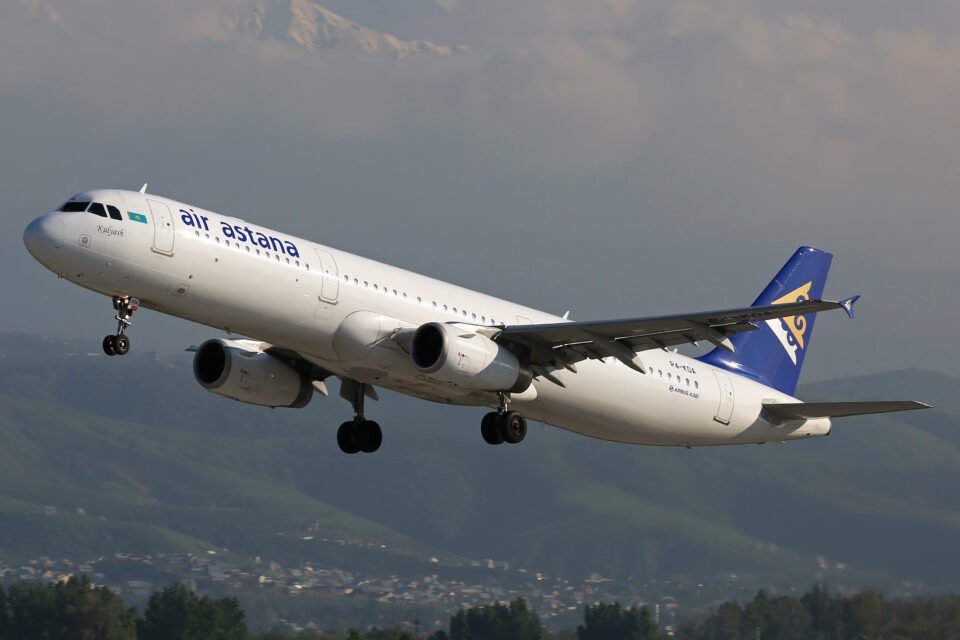Foreign flights are added as Air Astana switches to its summer schedule.
Air Astana is preparing with greater capacity for the spring-summer 2023 travel season on the heels of a very successful 2022. Air Astana announced today that it has shifted to its 2023 spring-summer schedule as the Northern Hemisphere waits impatiently for warmer months. March 26 to October 29 of 2023 will see the new operating schedule in place.

Through increasing frequencies, additional services, and the resumption of summer seasonal services, Air Astana intends to gradually increase the number of foreign flights from its base in Kazakhstan. Air Astana was running a network of 27 international and 15 domestic routes at the end of 2022, while its low-cost subsidiary, FlyArystan, was operating a network of 8 international and 26 domestic routes.
an emerging network and a young fleet
35 aircraft from the Airbus A320/A321 family, three Boeing 767-300ERs, and five Embraer E190 E2 jets make up the Air Astana Group’s youthful fleet of 43 aircraft. The fleet now has an average age of six years, and this year, the addition of six more planes is anticipated.
Three Boeing 787 Dreamliners will begin arriving in 2025. Almaty International Airport (ALA), where Air Astana is based, and Nursultan Nazarbayev International Airport in Astana, the country’s capital, serve as the airline’s primary bases of operations in Kazakhstan (NQZ). Services from both of those airports are affected by today’s schedule modifications, which also include the following.
out of Almaty
Ten additional weekly flights will be made to Antalya, Turkey.
Seven more flights per week will be available to Tbilisi (Georgia).
Up to fourteen weekly flights are available to Tashkent (Uzbekistan).
There will be up to five weekly flights to London.
Nine flights each week go to Bishkek (Kyrgyzstan).
There will be daily flights to Beijing and eleven weekly flights from Istanbul to Chengdu in China.
Up to four additional flights per week will be made to Baku (Azerbaijan) and Dushanbe (Tajikistan).
out of Astana
Seven days a week were added for Antalya.
Tbilisi grew by three each week.
Five weekly flights to Tashkent
Up to two every week in Beijing
Up to seven flights per week to Istanbul
Moreover, there will be an increase to three weekly flights from Atyrau International Airport (GUW), a city in Kazakhstan on the Caspian Sea, to Istanbul.
Spring and summer seasonal relaunches

The spring-summer schedule calls for the continuation of some seasonal services as well as the resumption of others. From Almaty, seasonally scheduled flights will once again depart for Bodrum (Turkey), Heraklion (Greece), Podgorica (Montenegro), and Batumi (Georgia). Similar to that, Astana-Podgorica service will resume with three flights per week.
Last but not least, Air Astana announced that it would continue to offer direct daily flights from Almaty to Thailand, with three flights per week to Bangkok and four per week to Phuket International Airport (HKT).
after a successful 2022
The Air Astana Group declared a profit after tax of $78.4 million on revenues of $1.03 billion from 7.35 million passengers last year. These figures exceeded 2021 by 115%, 36%, and 11%, respectively. The airline has been operating for 20 years.
The airline had to deal with route closures to, from, and over Russia as a result of the war in Ukraine, and was also impacted by political upheaval in Kazakhstan. According to President and CEO Peter Foster, the enhanced capacity deployment to Europe, Asia, India, and the Caucasus “more than made up for” the lost revenue from those events. Nevertheless, he had high hopes for FlyArystan.
“During its first year, 2019, FlyArystan has increased by 366%. The market for low-cost air travel in this region is arguably expanding at the quickest rate in the world right now, so it has a bright future.”
Foster predicted that passenger growth will increase in 2023 but cautioned that there would still be challenges, including inflation, concerns with the Pratt & Whitney 1100 engines’ technical reliability, and resource and supply chain constraints at airports and service providers.




